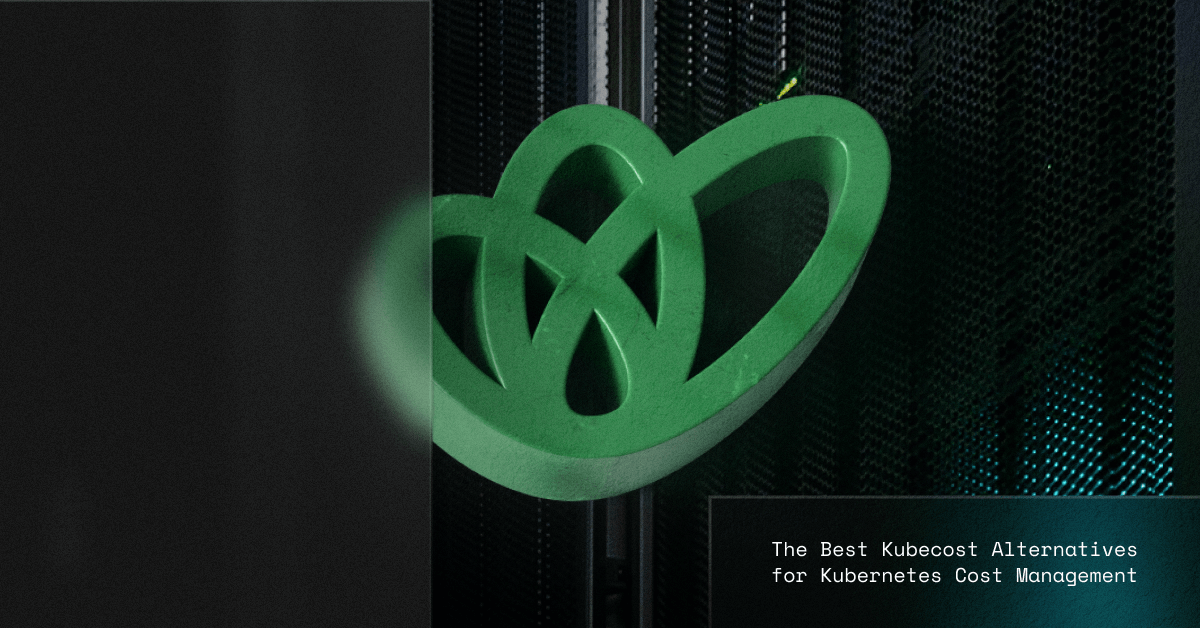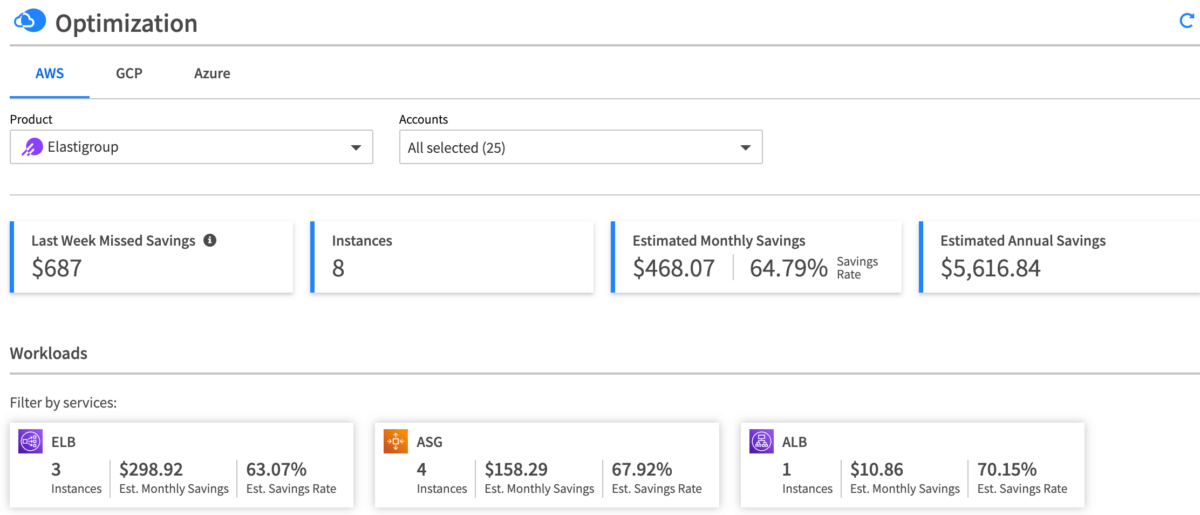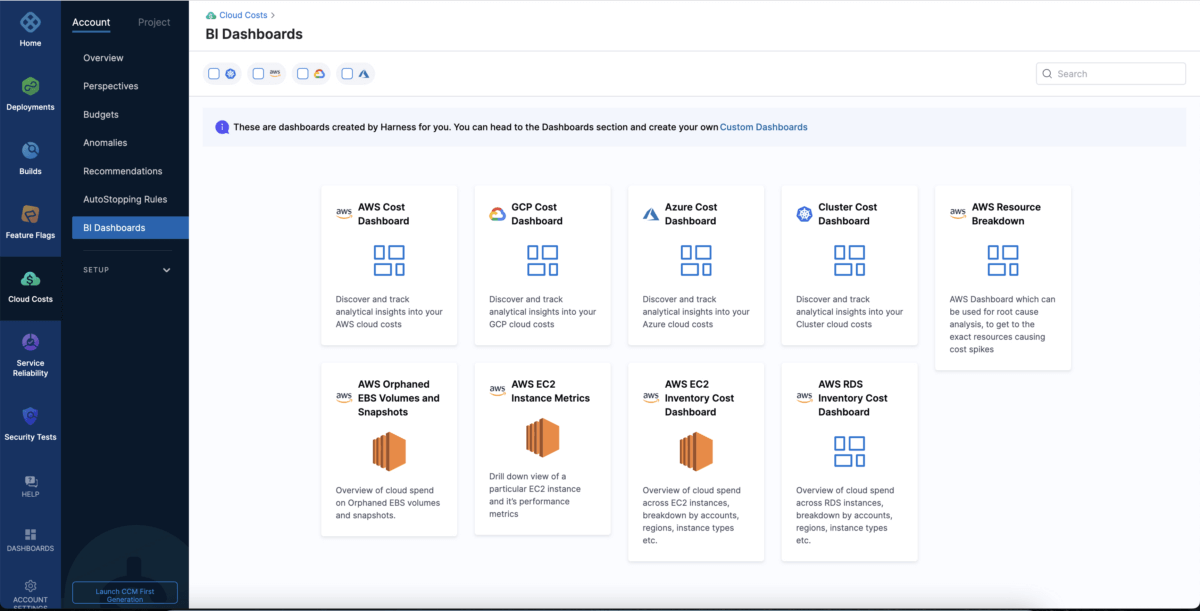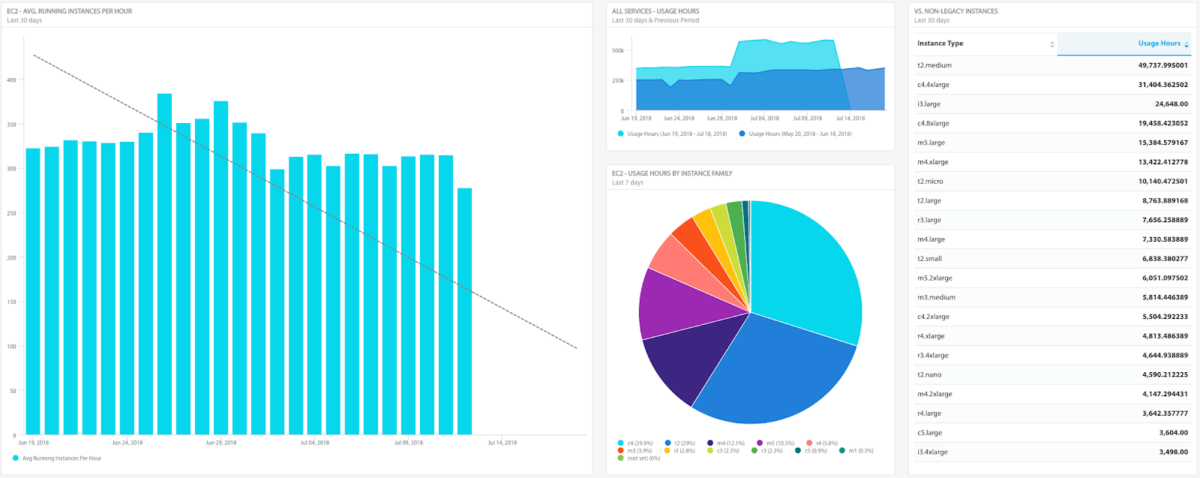Cloud cost management gets even trickier in cloud-native environments. This is why the market is brimming with Kubernetes-specific solutions such as Kubecost. Alternatives to this tool are popping up all over the place, too.

Finding the right Kubernetes cost management solution can be challenging since different suppliers offer a variety of features, cloud pricing methods, and use cases. Our team examined cloud cost management technologies to help you keep track of your cloud spending.
All of the options listed here can help organizations optimize their cloud bills and expedite their cloud cost monitoring and reporting procedures. However, our research indicates that only solutions that go beyond cost monitoring and reporting and provide automatic cloud cost optimization may make a significant difference.
Kubecost alternatives: The key limitations of Kubecost
Before we move on to examine the Kubecost alternatives, let’s take a look at why teams are looking beyond this solution.
Kubecost provides insights on Kubernetes cost allocation, monitoring, and alerts, as well as cost breakdown tools that are versatile and customized. Its detailed insights and cost reporting features make it an excellent pick for teams seeking to manage their multi-cloud infrastructure.
However, since it lacks automated Kubernetes cost optimization, you’ll have to make the necessary modifications manually. This includes additional costs that don’t guarantee a good ROI.
That’s why it’s worth focusing on Kubecost alternatives that offer some degree of automation in your selection process.
6 Kubecost alternatives you should consider
1. CAST AI – automated Kubernetes cost management and optimization
CAST AI is a fully-automated platform that analyzes, monitors, and optimizes Kubernetes applications. Its main competitive advantage is automation, offering capabilities like rightsizing, instance selection, autoscaling, spot instance use, and resource decommissioning.
This isn’t to say that CAST AI doesn’t have cost monitoring features. The platform provides users with a wealth of cost information by categorizing cloud expenses into project, cluster, namespace, and deployment levels. Teams may track costs down to individual microservices and get a comprehensive estimate.
CAST AI selects ideal compute resources for application requirements while saving costs, thanks to automation. When a cluster requires additional nodes, the automation engine chooses the best-performing instances at the lowest cost, assisting teams in avoiding overprovisioning.
CAST AI also comes with a free security report. You may scan your cluster against the CIS benchmark, the NSA-CISA framework, and other container security best practices to find vulnerabilities or misconfigurations, and it will automatically prioritize them in a matter of minutes.
CAST AI advantages
- CAST AI is made for Kubernetes teams and addresses challenges that are specific to cloud-native technologies.
- It provides a cost reporting module that breaks down cloud charges by project, cluster, namespace, and deployment. A team may track costs down to individual microservices and then get a full estimate of cluster costs.
- Using AI, the platform selects the best resources for your application’s needs while lowering expenses using autoscaling and rightsizing capabilities.
- When a cluster requires more nodes, the automation engine chooses the best-performing instances at the lowest possible cost. This allows teams to avoid overprovisioning and achieve high resource utilization.
- CAST AI’s autoscaling settings help users save money. The platform calculates the ideal number of necessary pod instances and adjusts the replica count of pods. If there is no work to be done, it eliminates all nodes.
- CAST AI can also help you avoid paying for resources you don’t utilize by emptying nodes. To optimize savings, the method incorporates automated bin packing.
CAST AI limitations
- It only works with Kubernetes (EKS, AKS, and GKE).
Takeaway: CAST AI is ideal for companies seeking to cut cloud expenses without increasing engineer burden. Another ideal use for CAST AI is in teams that seek to automate time-consuming cost optimization processes like instance selection, rightsizing, or autoscaling.
See CAST AI in action
End those massive cloud bills! Learn how to cut 50%+ automatically
2. Spot by NetApp

Source: Spot by NetApp
Spot by NetApp is a cloud cost management solution that uses spot instance automation to improve cloud expenses. The platform automatically obtains spot capacity for workloads, assisting in cost reduction and ensuring high availability.
The platform breaks out the expenses involved with cluster deployment and gives information on each tier. Expenses may be broken out into namespaces, particular workloads within each namespace, and further filtered.
You get data on compute and storage expenses for each workload to examine your application costs, do chargebacks without a lot of resource tracking, and forecast future cloud expenses.
Spot by NetApp has a useful rightsizing recommendation system that analyzes workload consumption in real-time and provides teams with suggestions for manually modifying resource needs. This enables high-level visualization and quicker implementation.
The platform essentially provides a cloud cost optimization solution that decreases cloud spending by concentrating on spot instances more than other Kubecost alternatives. Spot by NetApp initiates a scale-down to drain and terminate an instance when it detects workloads in the instance that may be dispersed across a cluster. It enables you to operate clusters on spot instances without provisioning or scaling instances.
Spot by NetApp advantages
- Spot by NetApp is a cloud cost management application that uses spot instance automation to reduce cloud expenses. Spot by NetApp splits cluster infrastructure expenses and provides information on each infrastructure tier.
- You may divide expenditures into namespaces and particular workloads inside each namespace, and you can further filter them by layer. Users get compute and storage expenses for each task.
- Spot by NetApp data can be used to monitor application costs, execute chargebacks without substantial resource tagging, forecast future cloud expenditure, and modify resources on the fly based on suggestions from Spot by NetApp’s cloud cost management platform.
- The platform continuously analyzes workload usage and provides recommendations for manually changing resource needs by container and task. This allows for simpler high-level visualization and faster implementation without interfering with applications.
- NetApp Spot detects unscheduled pods and scales infrastructure to guarantee that all of your pods have a place to run.
- Furthermore, Spot by NetApp prioritizes downscaling the least used nodes and eliminates them if all pods operating on them can be moved.
Spot by NetApp limitations
- The key point is that NetApp’s Spot decreases cloud expenses by focusing on spot instances. The tool recommends running workloads primarily on more spot instances, perhaps missing out on additional cloud cost optimization possibilities that might result in even greater savings.
Takeaway: organizations may benefit more from solutions that provide the same degree of automation but for more than simply spot instances, and are ideally capable of automatically assessing workload requirements and matching them with suitable cloud resources (such as CAST AI).
3. Harness

Source: Harness
Harness cloud cost management is a solution for continuous delivery and integration that focuses on enhancing cost transparency, optimization, and governance.
Harness provides detailed visibility into your Kubernetes clusters and cloud spending by reporting the used, idle, and unallocated resources by job and cluster. It displays cost information for projects, teams, business units, departments, and other entities. You may also generate periodic reports on your critical cost and consumption indicators.
Harness makes it easy to manage cloud consumption with bespoke budgeting, projections, and accounts for cost showbacks and chargebacks. It delivers detailed reporting as well as real cloud optimization recommendations. Cluster utilization, rightsizing, autoscaling, and cleaning unused or orphaned resources are some examples.
Before implementing the recommendations, Harness allows users to perform a what-if analysis to understand how they might affect their expenditures. The software lets you create budgets and track spending fluctuations, as well as continually monitor your consumption and receive warnings when it deviates from planned levels.
Harness also provides a wide range of automatic cloud cost management and optimization functions. AutoStopping, for example, can switch off non-production resources anytime they are not in use.
Harness advantages
- Harness is a cloud cost management system that includes a continuous delivery and integration module as well as Business Intelligence capabilities to increase transparency, optimization, and oversight of all your cloud spending.
- The solution provides comprehensive Kubernetes visibility by providing used, idle, and unallocated resources by task and cluster. It displays cost information for projects, teams, business units, departments, and other entities.
- It also allows you to build monthly reports on the most relevant cost and consumption data. Harness makes it easier to manage cloud expenses by providing bespoke budgeting, forecasting, and accounting for cost showbacks and chargebacks.
- Harness assists you with cost management by establishing and measuring variances from budgets. It continually analyzes your usage and notifies you when it deviates from expected levels, allowing you to keep track of cost and utilization across your different cloud resources.
- The platform provides unique, data-driven dashboards to help your team track resources across all public cloud providers.
- It also makes use of spot instances. Harness users may execute workloads on coordinated spot instances without fear of interruption; the platform manages this seamlessly.
- Finally, Harness provides tools for automatic cloud cost management and optimization. AutoStopping, for example, shuts off non-production resources when they are not in use.
Harness limitations
- Harness’ cost insights are helpful, but you must still implement them manually because the technology does not offer fully automated cost optimization. It also lacks key cloud optimization and automation capabilities like autoscaling and spot instance use.
- The platform provides two types of suggestions: performance-optimized recommendations and cost-optimized recommendations. The former may boost your costs, while the latter may cause system performance concerns.
Takeaway: Harness provides cost insights into your apps, services, and environments without requiring human tagging, decreasing the time required for this activity by teams. However, as useful as this information is, you must still manually implement it because the platform doesn’t offer true multi-cloud cost optimization. Important cloud optimization and automation tools like as autoscaling, rightsizing, and spot instance utilization are also missing from the platform.
4. Apptio Cloudability

Source: Cloudability
Cloudability’s financial management tools are useful for monitoring, allocating, and evaluating public cloud expenditures. Teams can use them to control cloud spending, make more informed cloud budget decisions, and automate some cloud optimization tasks.
Cloudability is essentially a tool for cloud monitoring and improvement. The solution analyzes data from the last 10 to 30 days and uses it to generate rightsizing recommendations for your resources. You can use Cloudability to create unique dashboards for different products, departments, or roles inside your business. True Cost Explorer allows for quick visual analysis of cloud charges and consumed data.
The system may calculate the ROI of spot instances and provide additional cloud optimization advice. As a consequence, your teams will be able to build a more consistent budget and baseline for future forecasting.
Cloudability advantages
- Cloudability provides automation in a variety of cloud spend areas. To begin, teams can configure and schedule daily cleanups of disconnected EBS volumes.
- During periods of low utilization, the program automatically turns down activities.
- The platform also allows customers to arrange the scaling of ASGs or the stopping/starting of EC2 and RDS instances while confirming the number of resources affected.
Cloudability limitations
- Automation features are limited.
Takeaway: While Cloudability offers excellent cloud cost management tools and data-rich dashboards, the product’s limited range of automation hinders its multi-cloud optimization and automation capabilities.
5. Cloudcheckr
Note: CloudCheckr has been acquired by Net App.
CloudCheckr is a cloud management solution that focuses on reporting, cost optimization advice, and policy-based automation. The platform began as a cloud security tool, but it was subsequently expanded to include solutions for cost management, tracking, optimization, and resource inventory.
The platform provides a complete view of cloud cost allocation data, allowing you to examine spending across all major cloud service providers’ resources. Its monthly reports reveal cloud expenses over time, allowing your team to interact with the data and enhance billing accuracy. Alerts paired with cloud governance will provide your team with greater control and aid in the avoidance of costly shocks.
CloudCheckr advantages
- CloudCheckr uses predictive analytics to generate resource purchase recommendations. The platform assists in cost reduction by detecting unused resources and making resizing recommendations.
- Hundreds of checks are performed by the solution to detect idle resources, unused instances, mismatches in reserved instances, and other issues. However, it merely provides suggestions for rightsizing and snapshot cleanups.
- Although CloudCheckr focuses mostly on policy-based cloud management, it does provide some intriguing automation options, such as automatically re-allocating, resizing, and updating reserved instances. The technology assists teams in making future purchases by keeping past data on RI inventory.
- CloudCheckr enforces tag-or-terminate policies automatically for enhanced infrastructure control. It also provides customers with automatic spot instance selection and replacement procedures that can result in significant long-term savings.
CloudCheckr limitations
- Limited automation features require more technical effort.
Takeaway: The main lesson is that CloudCheckr is best suited for teams trying to increase their cloud spend and visibility. The platform identifies patterns and makes suggestions for cost-cutting measures throughout the company, teams, or projects. However, due to restricted automation features that require more technical effort to properly deploy, these modifications will take time.
6. Zesty

Source: Zesty
Zesty began as a storage optimization tool and has evolved into a reserved cloud capacity buy-back solution with rightsizing.
The software offers rapid results and decreased reserved capacity management effort for teams utilizing Amazon EC2 Reserved Instances by leveraging AI and automation.
Zesty advantages
- Zesty continuously checks your cloud infrastructure requirements and modifies your RI obligations accordingly.
- To train its prediction model, the software collects data on your Amazon EC2 consumption trends. It checks the costs of RIs on the market at the same time to get the best offers for your workload’s requirements.
- Zesty’s freemium edition allows you to assess possible savings on your EC2 use in minutes, without the need to install extra software.
- The tool gives metrics for your RI consumption, such as on-demand compute cost, effective EC2 cost, daily compute cost, and more. It also allows you to see how your costs have changed over time as well as future forecasts.
Zesty limitations
- Because the platform only supports Amazon EC2 Reserved Instances, you will need to utilize extra tools if you use other clouds.
- The product does not provide a more comprehensive way to managing cloud cost visibility and control.
Takeaway: While Zesty assists AWS users in lowering their bills, it lacks a more holistic strategy to controlling and lowering your cloud spending. As a result, it focuses on the symptoms rather than addressing the core problem once and for all.
Conclusion
Scaling cloud resources is simple – so simple, in fact, that many companies lose control of their cloud spending. A single overlooked issue or architectural error may rapidly add up to a hefty charge at the end of the month.
That is why you need a cloud cost monitoring and optimization toolset that provides full visibility, exhaustive reporting, and – ideally – automated optimization capable of addressing the fast-changing requirements of cloud-native apps.
FAQ
The top Kubecost alternatives are solutions for cloud cost management such as CAST AI, Harness, Spot by NetApp, Apptio Cloudability, Zesty, CloudCheckr, and many others.
Comparing pricing for Kubernetes cost management solutions is difficult since each solution has its own unique pricing scheme. However, some solutions offer significant benefits to teams for free of charge. For example, CAST AI provides a cost monitoring feature with a handful of reports users can access for free (with a CPU limit).
Kubernetes cost optimization is challenging because of the dynamic nature of containerization. That’s why the best Kubecost alternatives are solutions that leverage automation, such as CAST AI. By using features such as automated bin packing, instance selection, rightsizing, and autoscaling, such solutions can address the most important Kubernetes cost challenges.
Not every Kubecost alternative provides automation features designed to handle Kubernetes costs. CAST AI uses automation to pick optimal computing resources for application requirements while saving money. For example, when a cluster needs more nodes, the automation engine selects the best-performing instances at the lowest possible cost, supporting teams in avoiding overprovisioning. Other automation features include automated bin packing, instance selection, and rightsizing.
If you need more than just cost reports and optimization recommendations, CAST AI’s automatic features will give amazing and long-lasting results quickly. CAST AI is an end-to-end solution that controls your cloud expenses and creates substantial savings by combining cost monitoring with automatic cost optimization. CAST AI users save 50% to 90% on their cloud costs on average.





Leave a reply